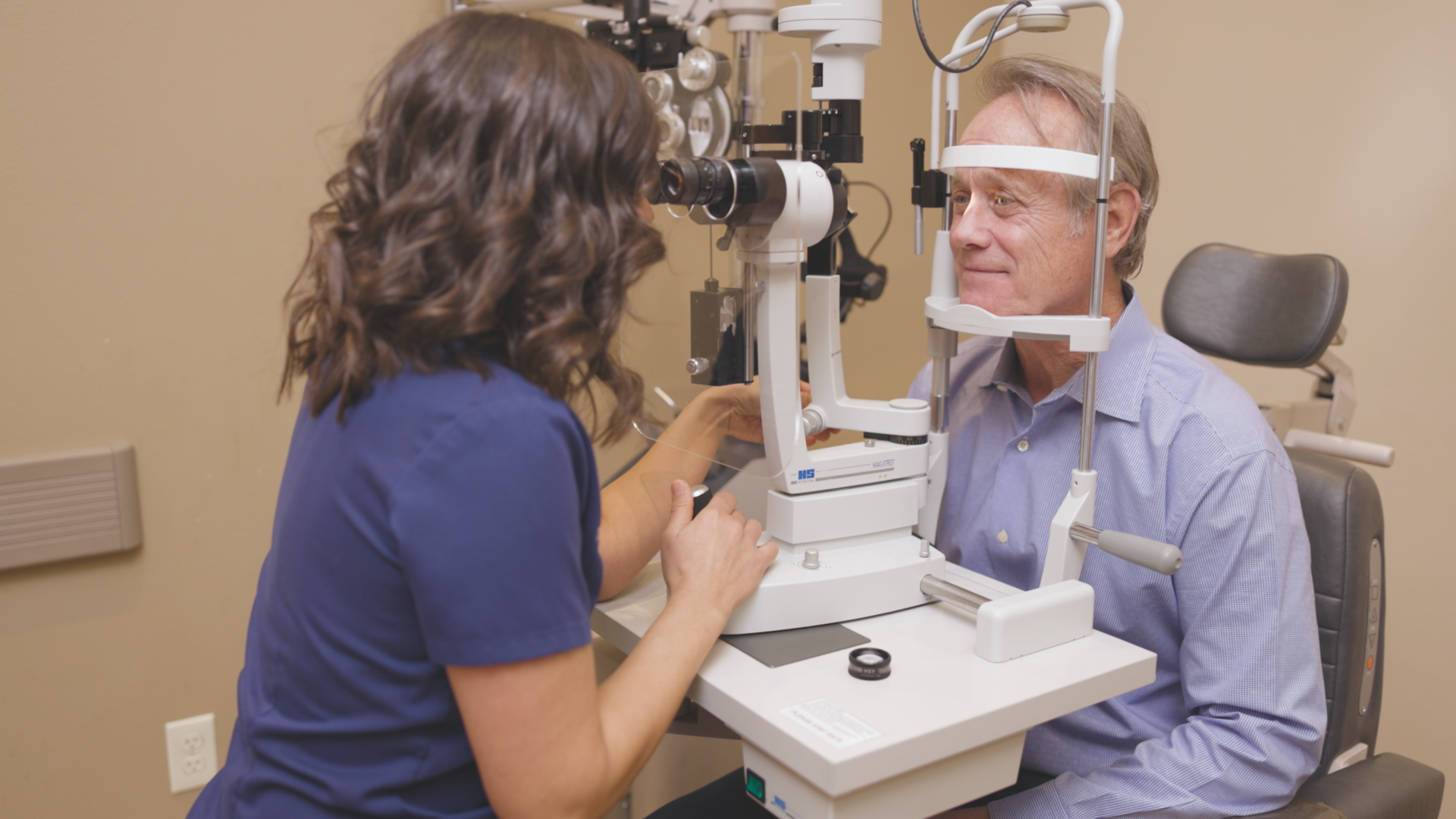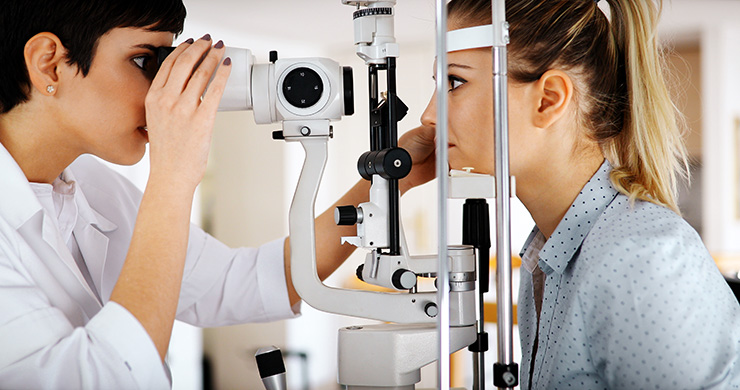Discovering the most up to date Technical Advancements in Optometry and What They Mean for Eye Doctors
In the ever-evolving area of optometry, recent technological developments are reshaping exactly how practitioners come close to eye care. From the precision of Optical Comprehensibility Tomography to the nuanced understandings supplied by AI-driven diagnostic tools, these advancements are establishing new requirements in patient assessment and treatment. Teleoptometry is positioned to redefine access, ensuring that competence transcends geographical restrictions. As these improvements penetrate the practice, optometrists are confronted with the difficulty of accepting these tools to enhance individual end results. Yet, the inquiry continues to be: exactly how will these technological changes redefine the functions and obligations within the occupation?
Developments in Diagnostic Equipment
Advancing the area of optometry, innovations in analysis tools have actually changed the way eye treatment specialists analyze and detect eye problems and visual impairments. The past decade has witnessed substantial technical improvements, making it possible for more comprehensive and precise analyses.
One more trick technology is the introduction of sophisticated corneal topography systems, which map the surface area curvature of the cornea with precision. These tools are particularly advantageous for suitable get in touch with lenses and detecting corneal problems. Furthermore, electronic retinal imaging has changed conventional ophthalmoscopy, supplying in-depth, breathtaking sights of the retina that help with thorough aesthetic evaluations.
The development of wavefront aberrometry has additionally been important, enabling the analysis of refractive mistakes with unparalleled accuracy (Optometrist Chino). This innovation assists in customizing rehabilitative lenses and enhancing surgical outcomes for refractive surgical procedures. Collectively, these analysis improvements equip optometrists to supply premium individual care, ensuring early treatment and tailored treatment strategies, eventually improving aesthetic health and wellness end results
AI in Patient Monitoring
Structure on the structure of innovative analysis tools, the incorporation of man-made intelligence (AI) in client administration stands for a transformative leap for optometry. AI systems are significantly utilized to improve effectiveness, accuracy, and customization in patient treatment. By examining large quantities of data, AI can recognize patterns and predict possible eye problems, allowing eye doctors to customize treatments more properly. This capacity is vital in taking care of persistent eye conditions such as glaucoma and diabetic retinopathy, where early detection and continual surveillance are crucial.
Moreover, AI-driven systems facilitate streamlined client communications and management processes. Automated organizing, digital assessments, and individualized follow-up strategies not only boost individual satisfaction however likewise maximize time management for specialists. These systems can triage patients based on the urgency of their conditions, guaranteeing that those in crucial need get prompt focus.
In addition, AI boosts decision-making by supplying eye doctors with evidence-based suggestions and treatment paths. By incorporating information from digital health documents, AI tools use understandings that educate clinical choices, lowering the threat of errors and boosting patient outcomes. As AI remains to develop, its function in client administration will likely increase, reshaping the landscape of optometric care.
Breakthroughs in Retinal Imaging
In the world of optometry, retinal imaging has actually observed impressive technical developments that are enhancing analysis capabilities and individual care. Developments such as Optical Coherence Tomography get redirected here (OCT) and fundus digital photography have actually revolutionized just how eye doctors imagine and evaluate the retina.
Improved imaging techniques like OCT angiography are further refining analysis accuracy. Optometrist Chino. Such developments promote the recognition of minute retinal adjustments that can signify illness progression.
Furthermore, developments in artificial intelligence are enhancing retinal imaging by making it possible for automated analysis of large datasets. These systems help optometrists in determining patterns a sign of pathology, therefore improving analysis precision and efficiency. Collectively, these developments are changing retinal imaging into a foundation of contemporary eye treatment, enhancing end results and increasing restorative opportunities.
Teleoptometry's Expanding Duty
Teleoptometry is progressively becoming a crucial part of eye treatment, driven by developments in digital interaction and diagnostic devices. This is particularly valuable in country and underserved locations where access to specialized eye treatment is usually minimal.
The integration of expert system (AI) more boosts teleoptometry, allowing the evaluation of visual data and helping in the discovery of ocular problems such as glaucoma and diabetic retinopathy. AI-powered algorithms can swiftly interpret complex imaging information, giving optometrists with useful insights that bolster scientific decision-making.
Moreover, teleoptometry sustains connection of treatment through smooth integration with electronic wellness records (EHRs), enabling optometrists to maintain comprehensive individual histories. This makes certain that people receive consistent and customized treatment even when seeking advice from with various experts.
In spite of these advantages, difficulties continue to be, including guaranteeing information security and handling patient assumptions. Nonetheless, teleoptometry stands for a substantial stride towards even more easily accessible, effective, and patient-centered eye treatment. As modern technology develops, its duty is poised to broaden further.

Future Trends in Eye Care
A myriad of innovative trends is readied to improve the future of eye care, driven by technical advancements and the progressing needs of people. One substantial trend is the integration of expert system (AI) in diagnostics, which assures to boost the precision and efficiency of eye evaluations. AI algorithms can evaluate huge amounts of information from retinal photos, potentially spotting problems like diabetic retinopathy and glaucoma earlier than traditional approaches.
In addition, customized medication is acquiring grip in optometry, with genetic screening informing personalized therapy plans. This technique intends to maximize person results by tailoring interventions to private hereditary accounts. Wearable modern technology, such as smart get in touch with lenses, is also coming up, offering real-time tracking of intraocular pressure or Go Here sugar levels, therefore supplying constant from this source understandings right into ocular and systemic wellness.
The adoption of increased reality (AR) and online reality (VIRTUAL REALITY) in training and individual education and learning is another arising trend. These innovations provide immersive experiences that can enhance understanding and abilities both for individuals and eye doctors. As these patterns evolve, optometrists should remain abreast of technological advancements to supply innovative treatment, making certain improved patient results and complete satisfaction in the vibrant landscape of eye care.
Verdict

Jointly, these analysis advancements encourage eye doctors to supply remarkable individual care, making sure very early treatment and tailored treatment techniques, eventually boosting visual health outcomes.

As these innovations continue to advance, optometrists should adjust and integrate them into practice, inevitably optimizing process effectiveness and elevating the criterion of eye care provided to people.